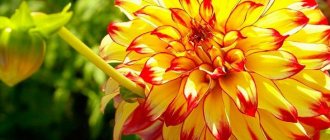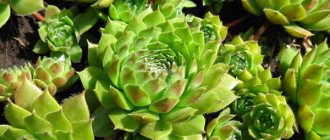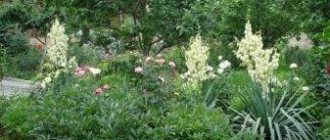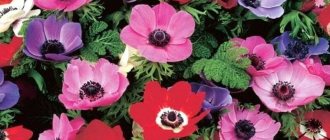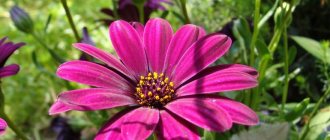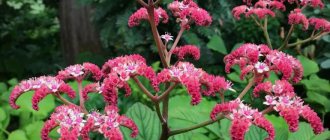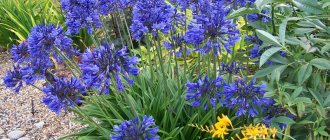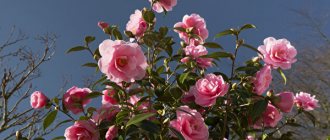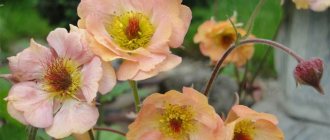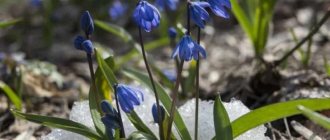- August 21, 2018
- Medicinal plants
- Anna Mallaalieva
Among the large number of herbaceous plants, hellebore heleborus (there is a photo in the article) stands out. This is due to the fact that the flowers are winter. The second name of the plant is Christmas rose. This flower was first bred in the Mediterranean. It gained fame due to its medicinal properties. Thanks to it, paralysis, gout, skin and gynecological problems, and epilepsy were previously eliminated. In addition, hellebore is now used for weight loss.
You should not pay special attention to the appearance of the plant. It is poisonous. When taking medications that contain heleborus, you must strictly follow all the doctor’s recommendations. Particular attention should be paid to the dosage. Under no circumstances should you exceed the permissible daily dose.
For gardeners, this plant is considered ideal: it is green all year round. They can decorate a shady place. Even under the snow, hellebore will look as attractive as possible.
At the moment, there are several natural and hybrid species. The plants have no stem. Flowers can reach up to five centimeters in diameter. The petals range in color from white-cream to pale red.
Where to plant hellebore? Landing location
Planting hellebores and caring for them must be carried out according to the rules. To make the plant happy for a long time, you need to find an area where there will be light shade. Due to this, the plant will constantly bloom, and the leaf blade will acquire a bright and rich shade.
Direct sunlight on hellebore causes it to wilt and deteriorate in color. The midday period is especially dangerous. It is at this time that the sun has the worst effect on the plant.
If we talk about beauty, then it is best to plant the described plant in a garden of coniferous trees. It will fit perfectly because of its evergreen color.
Application in horticulture
- Hellebore is grown in gardens. The plants are highly ornamental and valued for their evergreen foliage as well as their resistance to cold temperatures. Flowering early.
- The variety “Christmas Rose” can be called a favorite in the garden. White flowers open right in the middle of winter.
- However, H. orientalis and hybrids are considered a popular species. They look great in mixed borders, under trees and among bushes. They bloom in March.
What should the soil be like?
What do you need to know to plant hellebore and care for it? Properly selected soil plays an important role in the life cycle of a plant. The plant prefers alkaline soil. If this is not the case, then a neutral one will do. On the turf under the trees, hellebore grows quite actively. If the soil has constant acidic reactions, then lime and ash should be added to it. The plant will grow better if it is constantly fertilized. You can use tea peels as “additives” for soil.
If you are not 100% sure that the soil is ideal for the plant being described, then you can take some soil from the nearest forest. In terms of composition and structure, this soil is ideal. It can also be used to fill the planting hole and the area around the plant.
How to water a plant?
The article presents a photo of the hellebore flower. In order for it to be just as beautiful, it is necessary to water it correctly. If the plant grows in a snowy region, then there is no need to create an artificial irrigation system. This is due to the fact that due to melt water, the earth is constantly moistened.
Hard leaves do not evaporate liquid, but in hot weather the plant still needs constant watering.
Tips for Growing Hellebores
After planting, it is advisable to mulch the ground around the plant. Mulch will help retain moisture in the soil and protect against invasive weeds. Peat or compost can be used as mulch. They will also serve as biofeeding for plants.
Photo: The ground around the plant must be mulched.
Watering
The first 2–3 weeks after planting, the plant requires careful attention. We make sure that the soil does not dry out, so that there is no direct sunlight on the leaves for a long time. Watering should be plentiful. When the hellebore begins to grow, we reduce attention and watering.
Since it grows in partial shade, water will remain in the ground for a long time. If there is extreme heat and a long drought outside, be sure to water every evening.
| Important. Watering should be moderate and regular. There is no need to flood, otherwise the roots may begin to rot. |
Periodically we loosen the ground under the bushes and weed out the weeds. There are few weeds near the hellebore. And if you have dense plantings, then there will be none at all.
Hellebore feeding
During the warm season you need to feed the hellebore twice. We do the first fertilizing in early spring, when the snow melts, with complex mineral fertilizer. We carry out the second feeding during flowering. Add bone meal and slow-release fertilizers.
Photo: The flower needs feeding.
Pruning hellebore
In early spring and late autumn, before flowering, remove all old, damaged and dried leaves. We wear gloves. After use, it is advisable to wipe the pruning shears or rinse them with water. After wintering, some leaves may be affected by fungal diseases. Such leaves need to be burned.
Fertilizer use
The hellebore in the photo looks luxurious. This flowering can be achieved by using fertilizers. Mulch will protect the plant's roots from being exposed. This substance begins to decompose over time, turning into fertilizer.
Other additives may not be used (this is confirmed by reviews). This is due to the fact that the air saturates the plant with mineral nitrogen, and the soil with minerals. That is why additional fertilizers should not be applied.
Planting and transplanting
Hellebore is a plant that should be planted exclusively in the autumn season. By winter the flower will have time to take root well. This will allow him to survive the winter without much difficulty. The plant grows by self-seeding. If this process is not controlled, a colony will eventually be created.
Due to self-seeding, the beauty of a flower bed or lawn is spoiled. Therefore, it is important to destroy temporary processes. In order to rejuvenate the flowerbed, you should dig up a young plant and replant it. This will get rid of old plants.
In addition, you need to make a hole no more than 30 cm. This is due to the fact that the root of the plant itself is small. Accordingly, the hole should not be too large. If you have patience, time and opportunity, then you should lay out pebbles and sand at the bottom. Thanks to this approach, good drainage will be present. It will protect the plant from diseases. This approach will be especially appropriate if the flower is flooded in the spring. The soil should be neutral or slightly alkaline. It should not be sour under any circumstances. Ideally, it should be rich in humus and turf. The latter provides looseness. Seedlings should not be pushed too deep into the holes. Watering should be done moderately. The soil should be moistened, but not too much, otherwise the plant may quickly die.
You need to monitor humidity for the first week after planting. Watering occurs every day. Approximately 1 liter of water should be used. You only need to pour it under the bush. If the weather is humid or there has been rain, then you don’t need to water that day.
Landing activities
When choosing a place for planting, take into account the specimens’ dislike for frequent transplants. At one point they feel great for more than 10 years, preferring partial shade, well-drained, loose, moist soil.
Hellebore is planted under a spreading tree, whose leaves, falling, will provide mulch for it. A hole is dug with a depth and width of about 30 cm. The distance between seedlings is maintained at 35 cm. Compost is added to the hole and, carefully placing the root in it, the soil is compacted, watering.
How to water a plant for normal development? This question especially concerns the first month of life. In order for the root system to take root faster, watering is carried out regularly, sparing no liquid.
The bushes look amazing both in single and group plantings in combination with primroses, crocuses, daffodils, and cyclamens.
Planting in spring time
If desired, you can plant the plant in the spring. However, the hole should be slightly larger than the root itself. You need to put compost or humus at the bottom. The bush is installed in a vertical position. The root should be straightened, then it will not bend. Next, you need to sprinkle the root with soil, holding the hellebore flower with your hand. The planting level should be the same as in the seedling pot. A deviation of a couple of centimeters is allowed. After planting, the plant needs to be watered abundantly.
Care
Before the buds appear, dry branches are cut off, avoiding infection of young shoots. The stamp of faded shrubs is mulched using compost or peat. In summer, weed removal, systematic application of water and loosening are ensured. They feed the winter hut twice a season using mineral fertilizers.
Bone meal has a good effect.
Reproduction using seeds and dividing the bush
The plant should be planted either in spring or autumn. When dividing a bush, you need to carefully dig it up and wash it. This way you can easily see growth points. Using a sharp knife, you need to cut the bush into pieces. You should take at least 2 sprouts per division.
When propagating hellebore flowers, the vegetative or seed method is used. The first one is considered the most effective. The seed method is not famous among gardeners for positive reviews, since a large number of seeds die off over time. In addition, it is almost impossible to find seeds for free sale.
Hellebore in landscape design
In landscape design, hellebore is used to design shady alpine slides. The early flowering of the crop allows you to decorate the landscape composition in March, when the snow cover has not yet melted. Large decorative hellebore bushes form a wonderful combination in plantings of different types of plants, when dense clumps are formed, blooming with delicate flowers of pastel colors.
Hellebore in landscape design
It is allowed to plant hellebores in ridges and mixborders. The crop should not be planted in places where children can play: all parts of the plant are very poisonous.
Growing seedlings from seeds
Planting and caring for hellebores is a labor-intensive task. The formation of a strong plant can only be achieved with great patience. Seeds must be planted immediately as soon as they have been collected, without even allowing them to dry out.
Wooden boxes are great for seedlings. Their height is at least 10 cm. In this case, it will be possible to pour the required amount of soil. You need to make holes at the bottom of the box to ensure drainage. Expanded clay can be poured onto the bottom. It improves the drainage process.
You should sow shallowly. The maximum depth is 1 cm. 10 cm is left between the furrows. This is due to the fact that the hellebore flower (photo in the article) is difficult to transplant. If the dive can be prevented, the plant will most likely survive and be able to grow to its standard size. At least 5 cm should be left between seedlings. Seeds that have already been sown should be taken to the garden. They should remain there until spring. Do not forget about watering, moistening the soil when it dries out.
When the seedlings have already sprouted, they can be taken home. After this, it is important to take proper care. Planting hellebore in this case will be successful. Next, you need to water it in a timely manner. In the first year, only 2-3 leaves will appear. There is no need to worry, as the plant takes a long time to develop. A full-fledged seedling will be formed only after 3 years. Only then can it be transplanted into the ground. This is done in the off-season. In the 5th year, hellebore, as a rule, begins to bloom.
Experienced gardeners do not want to give it a place in the garden due to the long development of the plant. In this case, they advise using a regular box. It should be sown tightly. When the seedlings grow up, they are carefully dropped into pots. You can use tweezers, a fork, and toothpicks for this. Any of these devices will allow you to “undermine” the root.
In this case, the transplant will take place with minimal damage.
Reproduction
When growing perennials, bush division is often used. After flowering, the bushes are divided into parts and planted in selected areas.
This is done in the spring with the black variety, while the eastern varieties require the autumn period. You can get young plants using hellebore seeds collected immediately after ripening, otherwise, due to poor germination, the gardener will not be pleased with the result.
Planting in the ground takes place with a 2 cm deepening. After picking, hatched seedlings with two leaves are planted in shaded areas, and after two years they are designated for permanent residence.
How to collect seeds?
The fruit pod of the hellebore flower should be cut off when unripe and sent to a warm, dry place that will be well lit. As gardeners note, you can get the seeds after the box cracks. They are suitable for sowing within 2-3 weeks after extraction.
Gardeners believe that planting seeds immediately after removing them will be most effective. To do this, you need to prepare the place in advance. Seedlings will begin to germinate in spring. Flowering will begin after 5 years.
Caring for hellebores after flowering
After flowering, hellebore seeds begin to ripen. This process is lengthy. It starts in June and can last all summer. Here it is important to choose a moment when the seed box has not yet opened and spilled seeds onto the ground. To collect the seeds, it is recommended to put a fabric bag over the box. Organza is perfect for these purposes. It is transparent, allows air to pass through and holds its shape well without deforming the plant.
When you notice that the seeds are in the bag, simply remove it and transfer the seeds to a paper bag. Ideally, these seeds will be sown immediately after collection. Then the germination will be almost 100%.
Photo: Hellebore needs care after flowering.
Hellebore propagation
Hellebore can be propagated by seeds and division of the rhizome.
Reproduction by rhizome
It is the simplest and fastest. Plants that are already 5 or more years old are suitable for this:
- In spring or autumn, when it has finished blooming, we dig up the plant and divide it into several sections with gloved hands.
- Sprinkle damaged areas on the roots with crushed charcoal or activated carbon.
- Immediately after dividing, we plant them in the prepared holes.
Sowing in open ground
If you want to plant a hellebore flower (photos and descriptions are presented in the article) in open ground, then you need to adhere to certain rules. The ideal place for this plant is in the shade of trees, where there is light loam.
Furrows should be made at a distance of 15-20 cm from each other. The distance in a row should be no more than 10 cm so that the plants are as comfortable as possible. In winter, the bed can be covered with autumn leaves. This will allow those seeds that have already sprouted a little not to die from frost in the spring. It can be replanted in the designated places for hellebore only after 3 years.
When does the plant bloom?
The hellebore plant, photos of which demonstrate its beauty, is usually called winter plant. This is due to the fact that after the snow melts, the flowers begin to protrude from the ground. In some regions this process begins in March, in others in February. The flowers look bright and interesting. By April, foliage forms. Before the weather gets warm, the hellebore hangs on a tough stem.
It is during this period that pollination occurs and the fruit capsule is formed. If this process was disrupted and the fruit was not set, then the plant dries up with a peduncle. When propagated by seed, the plant blooms for 4-5 years, by dividing the bush - for 2-3 years. If you do not remove the seeds from the box, the hellebore will disperse them on its own.
Characteristics
Central Europe, Western Asia and the Mediterranean are full of wintering thickets of natural origin. The evergreen Helleborus from the Buttercup family, like all its “compatriots,” is saturated with poison. He, like a fairy-tale tin soldier, is resistant to frost and drought, blooming in February-March.
While other flyers are still sleeping, strange flowers with a diameter of 8 cm or more appear from under the snow cover, which can be compared to lanterns. An unpretentious shrub up to half a meter high, it has a simple-shaped stem with a thick rhizome.
Pests and diseases
The article presents photos of hellebore flowers. They show how beautiful a plant can be. At the same time, its growth is not hampered by frosts of -30 degrees. The plant can survive in more difficult conditions. As a rule, the “protective layer” in this case is snow. The first flowering is observed after the snow melts in December. However, this is observed only in areas with little snow, where the weather is predominantly warm. If the flower was bred in a natural environment, then the plant may suffer from a period of little snow. You can only cover it with spruce branches.
Due to the fact that the plant has tough foliage and poisonous properties, harmful insects do not attack it. Because of this, most diseases can appear due to excessive humidity. If gray or brown spots appear on the leaves, then there is a fungal disease in the hellebore flowers. A photo of the problem is attached below. To get rid of the disease, you need to cut out the affected area and use antifungal agents.
In adulthood, it is better not to replant the plant. It does not die, but growth and flowering will stop for several years. That is why you need to immediately choose a place in which the hellebore will grow.
It is necessary to exclude children from contact with this plant. Especially when it comes to its juice. Animals do not touch hellebore on their own because they feel that it is dangerous. Caring for the plant is easy. To have it at home or in the garden, it is enough to purchase a plant or grow it from seeds. You should not dig up a flower in the forest.
Eastern hellebore
This plant is the most common. It tolerates cold winters and dry summers well. It is problematic to grow it only in those areas where permafrost is present. The flower has a creamy tint and has large streaks. Hybrid hellebore species can have different shades.
How to plant and care for oriental hellebore is described above. The process is similar and can be applied to almost all types of plants. In summer, the flower must be protected from aphids, slugs and snails. To eliminate the former, it is enough to use an insecticidal preparation. In this case, you can remove snails and slugs yourself. If you want to fertilize the plant, you can use meat and bone meal. It should be added to the soil in early spring. In this case, the hellebore will grow for a long time, lushly and beautifully.
Reviews from gardeners
IgorM
Hellebores do not like open sun. They reseed very well if they have collected their seeds - germination rate is almost 100%
Source: www.forumhouse.ru
Murzilka
Hellebores sow themselves, but bloom only in the third or fourth year. And when dividing the bush in the summer, it blooms in the spring.
Source: frauflora.ru
Caucasian hellebore
Of all the known types of hellebore, this one is considered the most poisonous. It is used quite often in medicine. Because the leaves are large and tough, they are not damaged. In addition, they have a shiny sheen. To prepare a tincture from the plant, use the root. It is dug up and dried. Then it is used externally to treat skin or joints.
The plant itself is not tall: no more than 50 cm. The bush has a beautiful shape, the leaves are dark green. In order to grow it, you need to have soil similar in composition to forest soil. That is, the soil should have sufficient levels of phosphorus, potassium, nitrogen, and so on. As a rule, the flower grows in the Caucasus and Georgia, and is found in the Krasnodar Territory. His “favorite” places include spruce, beech, and oak forests.
What medicinal properties does the plant have? Caucasian hellebore, a photo of which is presented in the article, is able to normalize metabolism, remove swelling, reduce sugar concentration, lower blood pressure, relieve menopause and cleanse the genitourinary system. In addition, it calms the nervous system and removes sand (salt) from the kidneys and urinary tract. Often, drugs based on it are used for diseases of the gastrointestinal tract.
Black hellebore
This plant is named after its rhizome. It has a black tint. The flower is bright and white in the early stages, but becomes more pink over time. Due to its properties, the plant has gained popularity. In addition, it is able to survive in any climatic conditions. The flower stem is short, and the flowers reach 8 cm in diameter.
As for medicinal products, hellebore is also used in medicine. It normalizes blood pressure, improves the immune system, cleanses the body of toxins, stabilizes metabolism, improves gastrointestinal motility, and stimulates heart function. With long-term use of medications containing this plant, remission of chronic diseases can be achieved. This is due to the fact that it can improve the process of tissue restoration, cleanse the blood and remove breakdown products of harmful substances.
Description
In European countries, this flower is very often used as a holiday gift. It is a favorite gift for Christmas, which is why it is sometimes called the “Christmas Rose.” In our country, this plant is called “Zimovnik”, as it blooms in November or January.
Hellebore is a fairly large flower, reaching a length of 20 centimeters to half a meter. It has a short rhizome and long cuttings that grow directly from the root rosette. The leaves of the flower are large and hard. The flowers are cup-shaped.
Peculiarities
Hellebore blooms at the end of winter until the last days of June. Hellebore flowers are rich in their palette of colors. They come in purple, pale yellow, pink, blue-black, white, purple or speckled.
Gardeners value this plant because it is an early bloomer and delights the eye with a wide variety of flowers after an eternally white winter. Plus, it is resistant to drought and low temperatures. However, do not forget that hellebore is a ranunculaceae, which means it is poisonous to the body and you should be careful with it.
Reddish hellebore
This plant has narrow leaves, and they are slightly longer than those of other species. The hellebore reaches a height of 25 cm. The color of the flowers is red, the intensity of the shade depends on the variety. Became popular due to its interesting appearance.
The plant can be found in the Caucasus and Ukraine. Preparations based on this flower are used to treat problems related to blood circulation. It allows you to remove sand and salts from the body, prevents bile from stagnating, relieves headaches, restores water-salt balance, thins mucus in the bronchi, cleanses the body of toxins, reduces the amount of sugar in the blood, normalizes metabolism, and regulates blood pressure. Sometimes preparations with hellebore are used to eliminate cysts in the thyroid gland.
Refers to poisonous crops
Hellebore flowers can be either single-level or double. Photo: mtdata.ru
- Natural habitats . Helleborus - better known as Hellebore, in some areas called Christ Rose, Christmas Rose or Winter Garden. It grows in the Caucasus, throughout Europe, Turkey and Asia Minor. Artificially cultivated throughout the world.
- Varietal affiliation . Heleborus is a member of the Ranunculaceae family. Currently, 22 species are known. All such plants have leathery, dissected leaves with a different number of segments. The perennial lives for about 10 years.
- Bloom . The plant can bloom either from March to June or from November to January. Depending on the variety, flowering time ranges from 2 weeks to one and a half months. The height of the peduncle is 20 – 60 cm, the diameter of the open bud is 4 – 12 cm, the colors are varied, there are mixed options.
- Peculiarities . Winterweed is a poisonous crop; the juice contains dangerous glycosides; at the same time, it is considered a medicinal plant; in folk medicine, drugs for weight loss are prepared from it.
stinking hellebore
This plant has green foliage and flowers of approximately the same color. This type of hellebore gives off a strong and unpleasant odor. However, gardeners note that this does not diminish the beauty of the plant. On the contrary, the flower still looks attractive.
This plant is propagated by self-seeding. It should be noted that dividing the rhizomes can lead to the death of this type of hellebore. The plant reaches a height of about 50 cm. The leaves are deeply dissected and look exotic, which attracts many gardeners.
Varietal varieties
Vegetation has many types and varieties, of which the most popular are:
- Black hellebore with snow-white or pinkish flowers.
- White, pink, cream, purple buds with internal inclusions of the eastern subspecies, blooming closer to spring.
- Caucasian specimens, distinguished by decorative foliage and strong toxicity.
- A stinky type that reproduces by self-seeding, its original pale green flower cups are unusually attractive. Their smell is not very pleasant, but the exotic leathery leaves look impressive.
Today, many hybrids of different shades with double and regular petals have been developed that take root well on Russian territory.
What seems to us like large drooping flowers are faded, overgrown sepals that retain their flower configuration for a long time.
